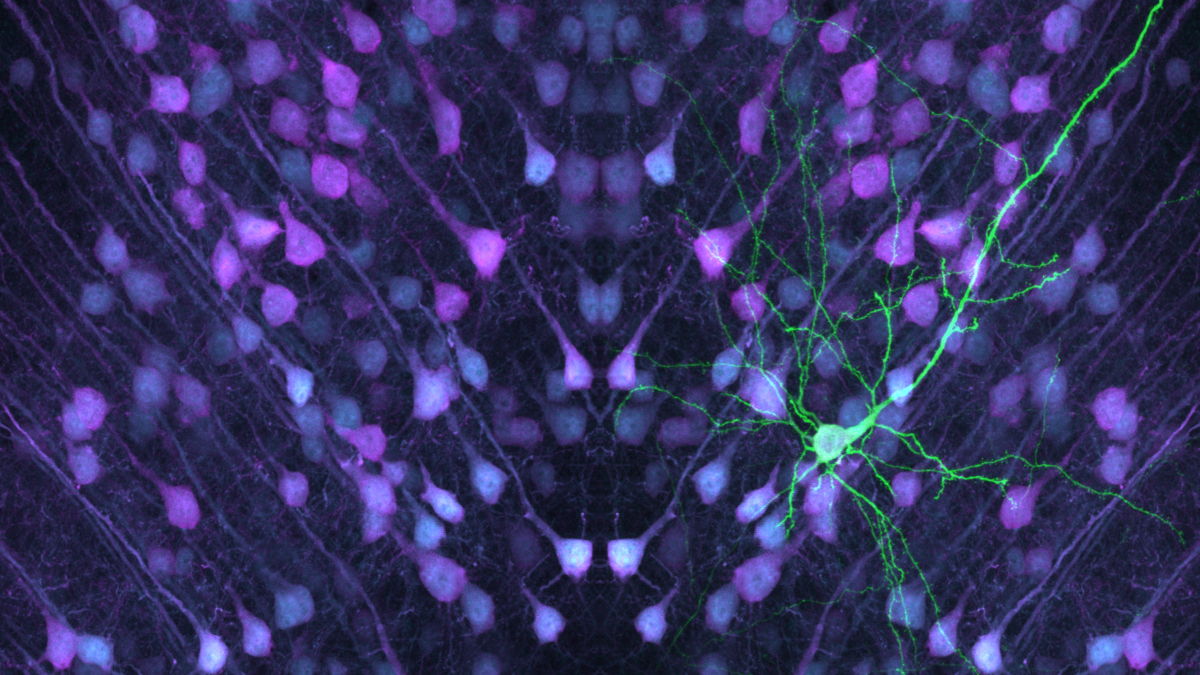Research reveals unique features of brain cells linked to neurodevelopmental conditions
7 January 2025, Leuven – Specific brain cells known as layer 5 pyramidal neurons play a vital role in how our brains process information. Research by the team of Prof. Joris de Wit (VIB-KU Leuven) and colleagues highlights the differences between two types of these brain cells —intratelencephalic (IT) neurons and pyramidal tract (PT) neurons—and how these differences may affect their vulnerability to conditions like autism and schizophrenia.
Profiling synapses
Among the neural circuits that let our brain process information, brain cells known as layer 5 pyramidal neurons integrate information from various sources and then distribute it to where it needs to go, like relay hubs in our brain.
To understand how these brain cells exchange information through their synapses (junctions to exchange chemical ‘messages’), the team of Prof. Joris de Wit (VIB-KU Leuven Center for Brain and Disease Research) used a sensitive technique called proteomics to profile the synapses of two types of mouse layer 5 neurons —intratelencephalic (IT) neurons and pyramidal tract (PT) neurons, each with different functions in relaying information.
Working with proteomics expert Prof. Andy Howden (University of Dundee, UK), they discovered that while both types of neurons share some synaptic proteins, they also have unique features that may influence their functions and their susceptibility to certain autistic traits and mental health disorders such as schizophrenia.
Disease vulnerability
"Mapping the synaptic protein composition of layer 5 neurons is an important step in understanding how these neurons are wired into neural circuits and how this process may be affected by neurodevelopmental disorders," says Prof. Joris de Wit. "Our findings suggest that the synapses of layer 5 IT neurons are more susceptible to autism." In follow up studies, supported by the Simons Foundation, the team of Prof. Joris de Wit will investigate whether autism risk genes affect wiring and information processing of layer 5 IT neurons.
Dr. Gabriele Marcassa, first author of the study, adds, “By extending our approach to mapping synaptic profiles of different neuron types in the brain, we can begin to understand their roles in health and disease.”
Publication
Synaptic Signatures and Disease Vulnerabilities of Layer 5 Pyramidal Neurons. Marcassa et al. Nature Communications, 2025. DOI: 10.1038/s41467-024-55470-w.
Funding
This research was supported by FWO – Research Foundation Flanders.
India Jane Wise
About the VIB-KU Leuven Center for Brain & Disease Research
Scientists at the VIB-KU Leuven Center for Brain & Disease study how brain cells are organized and how they communicate with each other. These mechanisms reveal and provide insights into what goes wrong in brain diseases such as Alzheimer's, Parkinson's, ALS, and dystonia. This basic work should ultimately lead to new drugs for use against these currently incurable diseases.



